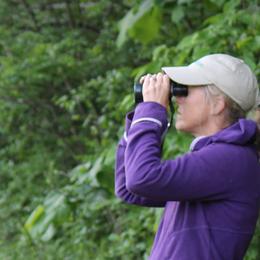Most shrubland birds like Golden-winged Warblers, Eastern Towhees, and Field Sparrows leave their Vermont breeding grounds and spend the winter in warmer climates, giving land managers the perfect opportunity to enhance habitat without causing disturbance to nesting birds. In addition, using mechanical equipment on frozen ground minimizes any potential impacts to soil and wet areas. In this photographic essay, we show the before, during and after management activities that typically happen at this time of year.
Before:
This shrubland is an example of an area that could use some enancements, including:
- removing invasive species like Japanese honeysuckle and common buckthorn
- creating more gaps between shrub thickets by removing invasives and a few tall trees
- removing tall native shrubs that have lost vegetation close to the ground
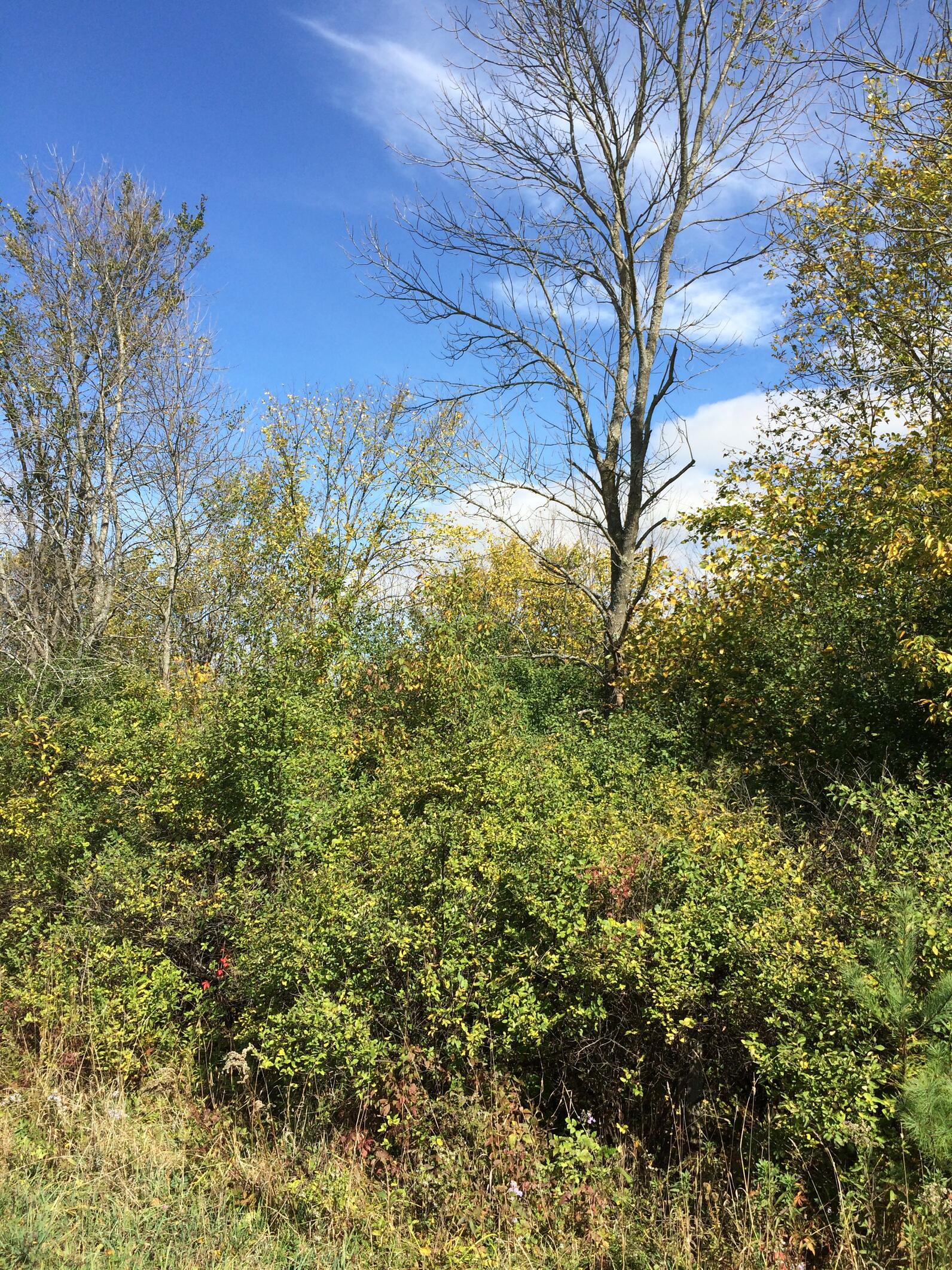
During:
Machines such as this "grinder" and larger "brontosaurus" are good tools for grinding invasive species, trees, and tall native shrubs. Work has minimal impact on the soil and does not disturb nesting birds.
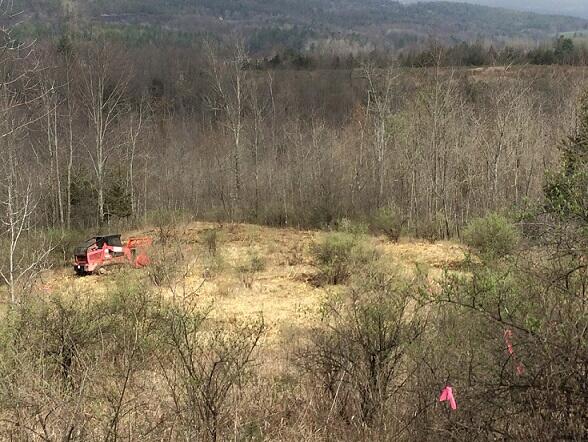
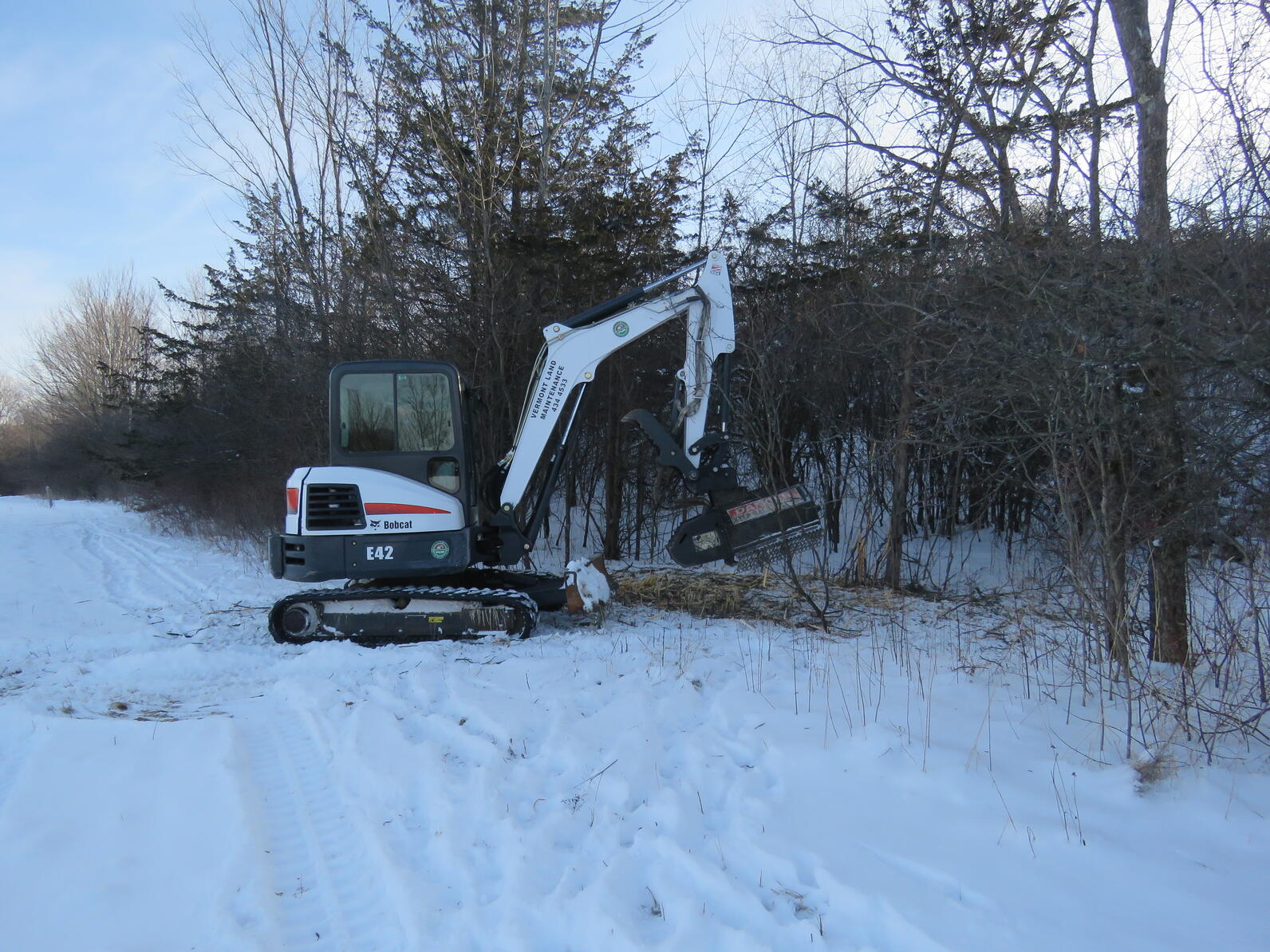
After:
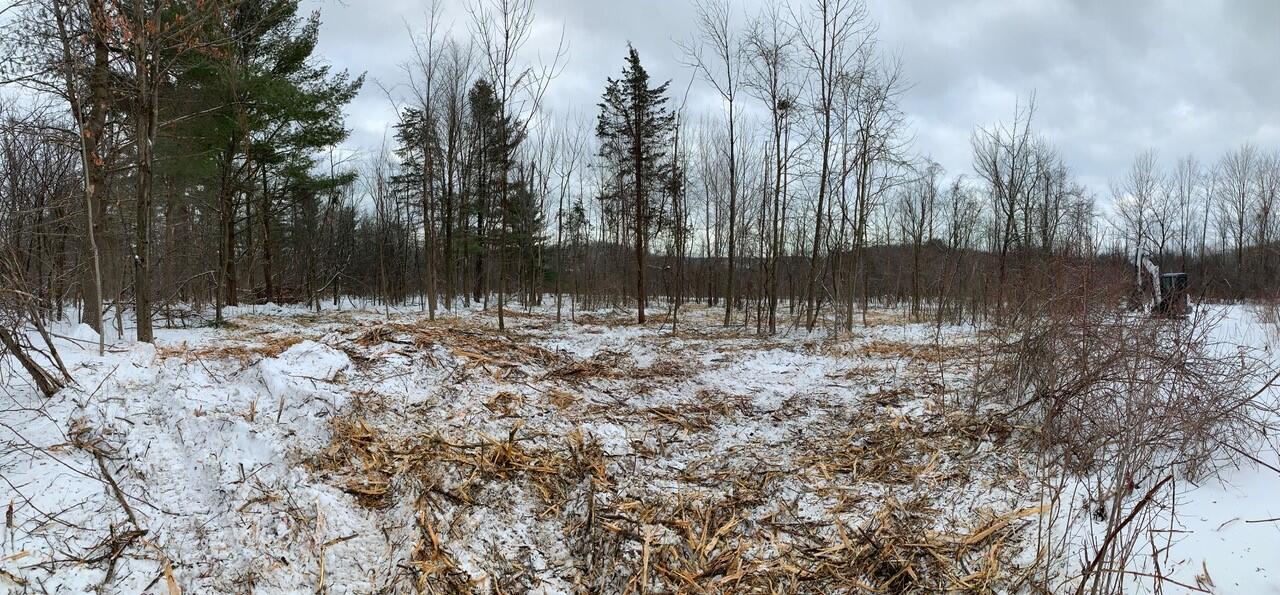
By the following summer, much of the habitat has filled in and is regrowing. It may take another season for birds to return, but often they return the first spring after work has been completed.
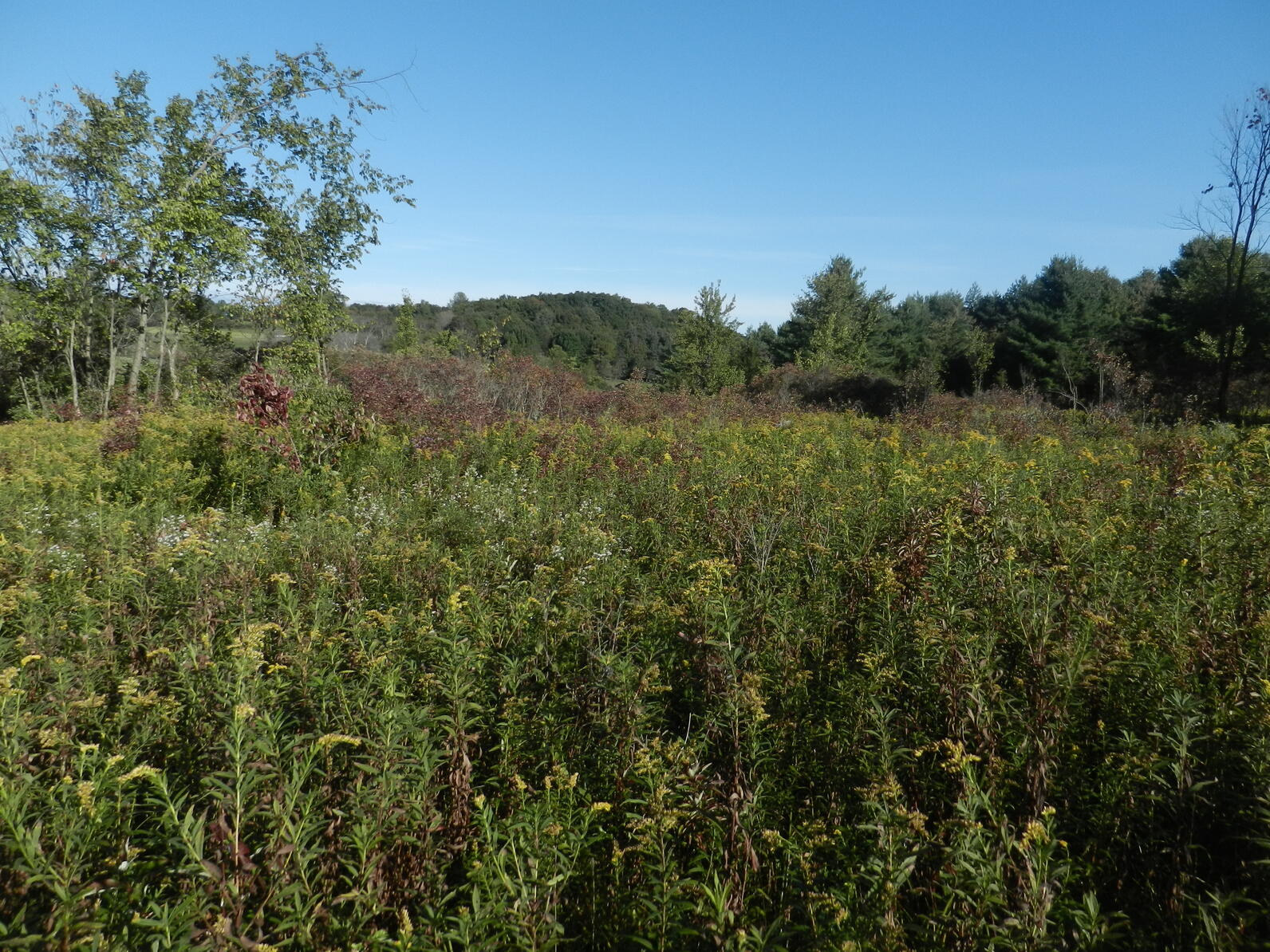
For more information on Audubon Vermont's shrubland bird habitat work, visit: click here.

